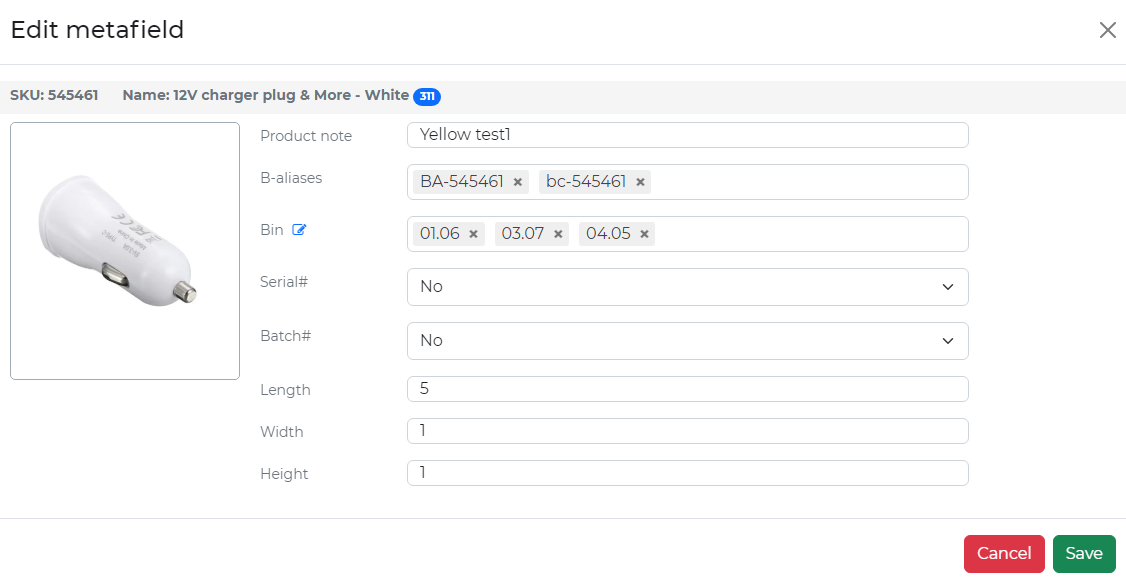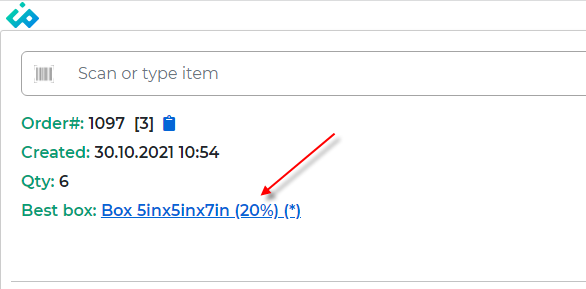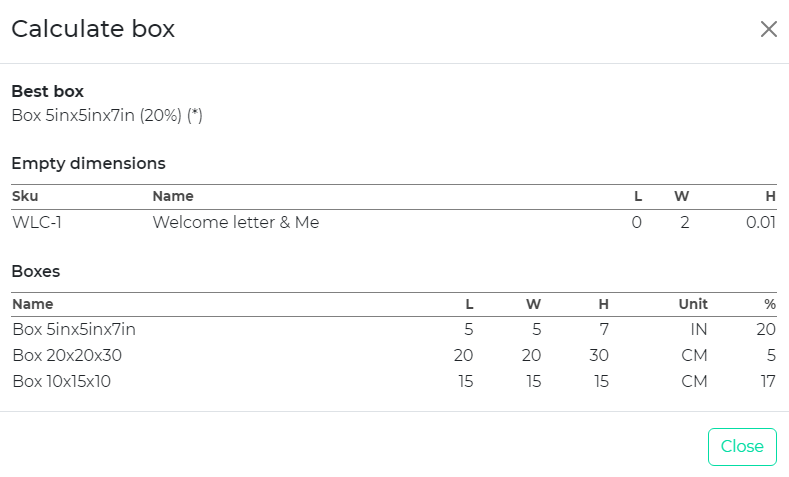Note: This functionality is in an add-on module that has to be activated by iPacky.
By using this module, iPacky will help you to decide which of the available boxes you should use when packing the order. It uses an advanced algorithm by calculating the best way to fit the items inside the box. So it’s not just about volume, that would be easy and many times wrong. Take for example a 250 pack of A4 sheets of paper that has the dimensions of 21*29.7*10 cm. By volume, it would fit in a box that is 22*20*18 cm. But since it’s not foldable, no dimension of that box would fit the 29.7cm dimension. And then there might be other items in the order that together would not make it possible to fit. No matter how you place them inside the box.
So this box calculation is a huge time saver.
Configuration and setup
First, you need to specify the available packing boxes. This is done in Dashboard→Boxes.
Secondly, you need to specify the dimensions of your products Dashboard→Metafields, or Edit metafield.
We recommend that you use Metafields for the initial entry of the product dimensions. There you can export to Excel, enter the dimensions in the spreadsheet, and then import the file to Metafields again. Later, individual new products can easily be edited in Edit metafield.
The fields for length, width and height will not be visible unless the Packing box calculation module is activated.
The product dimensions will never be lost even if you uninstall iPacky. You can export to Excel, and it’s even saved in metafields in Shopify.
The on screen view can look like this:
Considerations when entering dimensions
- The dimensional unit will be the same as the one chosen when adding the Packing box calculation module (Cm or Inches). Use dot to enter decimal values, like 2.1
- No need to enter non decimal numbers like decimal, like 2.0
- The Boxes declaration can be in Cm or Inches, and when doing the box calculation they will be handled
- It can sometimes be confusing what is length, width and height. But it really does not matter
It can be difficult sometimes to make a “correct” dimension. Especially for objects that are not square.
With round or rectangular objects like a bottle, use the dimensions of the item it would take if it was placed inside a box.
Other items that can be “flattened” like a pillow, use the dimension it will take when pressed together.
Also, with foldable items like a paper or clothing, use the smallest dimensions acceptable when folding. In the case of a A4 paper, it would not be calculated correctly if using the dimensions of 21*29.7*0.01 cm. Because the box might not be big enough to fit the unfolded item. In the example of the A4 paper, the folded dimensions could be around 7.5*5.5*0.1 cm. Use the smallest dimensions that are acceptable in packing for foldable items.
The dimensions of items like screws can be smaller than the square dimensions, since they can fill out non-square space when put in a box.
Remember that the box calculation will never be 100% accurate because of the implications mentioned above. But it will still be a big time saver.
Info on the scan screen
On the order scan screen, it can look something like this:
Here you see the optimal box chosen to pack in. You also see how much of the box space is utilized in percent with the items on the order. If you’re getting close to 100% it’s probably better to go for a bigger box.
If it shows a star (*) after the box, it means that some of the products on the order does not have all the dimensions entered.
In case no box fits, it will also tell this.
By clicking on the hyperlink, you will see the details:
In this case you will see the box chosen as the best. Also if any order items has any missing dimensions.
It also lists the defined boxes, and how good this order will utilize the space in these boxes.
We highly recommend that you export to Excel once in a while to have a backup if disaster strikes.




